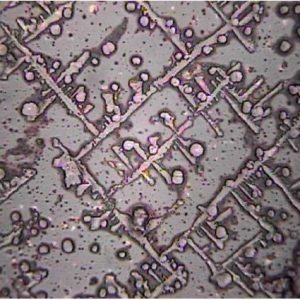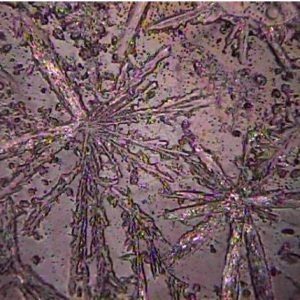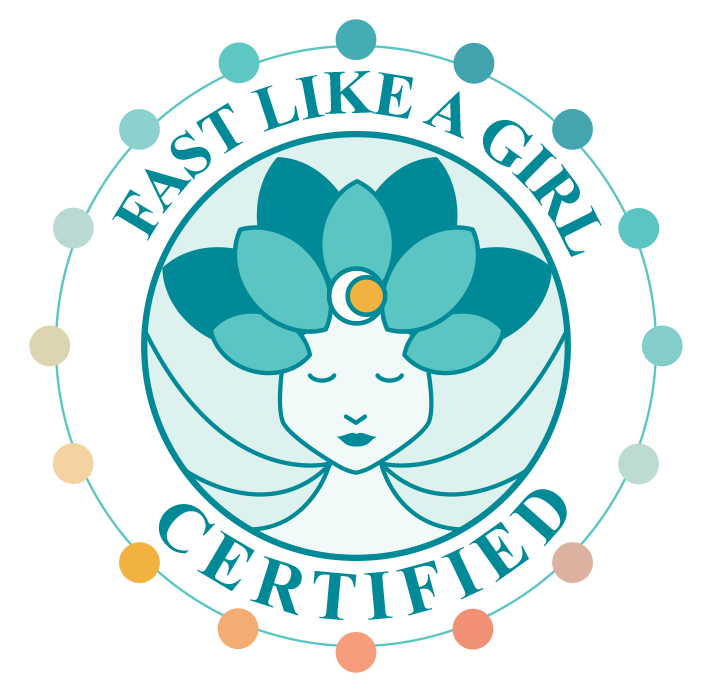published in NDNR Jan 13, 2022
The human body requires water to function properly. However, not all water is equivalent. Having high-quality water is essential to human health.
But how do we define quality?
Water sources in Nature vary and can often need to be treated or filtered for human consumption. The water available to most people is heavily processed, having been chemicalized, pressurized, and forced to flow in straight lines and at right angles. Unfortunately, most of the water humans consume has lost its vitality. It is low-quality.
The water in our bodies, on the other hand, is high-quality water. It supports metabolism and DNA function, enables nutrient transfer into cells and waste products out, maintains pH, and facilitates electrical communication between cells.1
This is why it is important to consider the implications of the source of the water in our bodies. We also need to educate our patients on what creates high-quality water.
One aspect of high-quality water includes reducing the risk of infection and exposure to environmental toxicants, and in most developed countries with access to clean water, this is accomplished. However, reducing risk of infection and exposure to environmental toxicants is not the only thing necessary to create high-quality water, and some of the methods used to accomplish these tasks reduce the vitality of the water overall.
I would like to propose that in addition to its composition, dissolved minerals, and freedom from contaminants, high-quality water does have a particular crystalline structure.
In this article, I will review research pertaining to water quality based on its crystalline properties, how to identify high-quality water, and how to revitalize water so that it can support health and wellbeing.
Spring Water
Why not just get high-quality water where it exists in Nature?
The reality is that pristine mountain streams where water is purified and vitalized are rare, remote, and often polluted.2
Despite the alluring advertising, bottled water is no longer pristine mountain water. Labels are often confusing, and some bottled water may even be filtered tap water. Furthermore, most advertised “spring” waters are bottled in plastic containers, which may or may not add significant contaminates, depending on the amount of time spent in the bottle and the amount of heat encountered during processing and transit.
Water essentially becomes a processed food when it goes from spring to package. It may be filtered, subjected to ultraviolet light, ionization, or boiling to ensure freedom from viral or microbial contaminants.3 After this processing, water can contain toxic, volatile organic compounds like benzene and carbon tetrachloride, as well as organic toxins like lead or cadmium.4
Also, it is water’s nature to flow. What happens once it becomes confined to a bottle?
Additionally, how sustainable is it to have an individually packaged serving of water? Until we can sit by that unpolluted mountain spring and drink directly from the source, we must work with what we have. So, how we can improve the water that is available?
Water Supply
In order to begin using high-quality water, the first step is to find out as much information as possible about the source of the water we are using.
Practitioners and patients can check the Environmental Working Group’s (EWG) National Tap Water Database to get detailed information published by zip code.6 Water supplies can vary greatly in hardness and dissolved contaminants, whether from a well or municipal sources.5 Of most concern are toxic, radioactive, or heavy metals such as arsenic, uranium, or lead.7,8 Excess calcium or other minerals can also create hard water.
Even though municipal water is filtered for pollutants and treated for infectious agents, it can still contain pharmaceutical drugs or their metabolites.9 Municipal water can also have other contaminants that are under reportable legal limits.
One of the most useful features of the EWG database is that individuals can find which type of filter to buy to remove specific contaminants related to their municpality’s water supply.
Creating High-Quality Water
In a 2002, Andreas Schultz used crystal microscopy to search for the highest quality treated water.10 The winner used filtration to remove excess minerals and harmful substances, then passed the water through a flow form vitalizing unit.10
In a similar manner, practitioners and patients can use Schultz’s research as a framework to identify and create high-quality water themselves.
Step 1: Remove Contaminants
Any filter can be better than none, however, using a filter specific to an individual water supply can be an essential start to improving water quality. Doing research on water filters also ensures that the filter is removing what it claims to remove.
For additional resources to aid in researching municipal water supplies and/or filtration options, see Table 1.
There are 4 main techniques used to treat water. They include reverse osmosis, activated carbon filtration, ultraviolet (UV) technologies, and distillation.11 Each has its advantages and drawbacks, including effectiveness, costs, and environmental impact.
Individuals can choose the best water treatment based on what is appropriate to their water source.
Reverse Osmosis
Reverse osmosis (RO) tends to be popular because it is effective.
The drawback of RO is that it is a water-intensive process, wasting at least 3 gallons of water for each gallon of water purified. It can also be expensive to install an RO system.
Typically, a reverse osmosis system has a pre-filter to capture larger particles, sediment, and chlorine. The next stage of RO system has a semipermeable membrane that captures smaller particles (>0.0001 microns). Finally, the system typically ends with an activated carbon filter that removes residual taste, odor, and organic contaminants.
These modules do need to be changed regularly for purity and to avoid harboring bacteria – a problem more common than one might expect.
Activated Carbon
Activated carbon filtration units can vary in their efficacy and specified filtration targets. They do not need pressure like reverse osmosis, so a countertop, gravity-fed unit is possible.
Activated carbon filters usually target certain volatile organic compounds such as benzene or trichloroethylene, various pesticides, and petroleum-related compounds. They are also effective at removing metals like lead and copper. They do not remove nitrates, bacteria, or dissolved minerals.
One of the main benefits of these types of filters is that they can be easily maintained by swapping out a cartridge once or twice a year.
Ultraviolet Light
Ultraviolet technologies are used to disinfect water sources. They are effective at removing bacteria, protozoa, and viruses.
They are not effective at removing particulate or chemical contaminants. Depending on individual needs, UV technologies can be paired with other filtration methods.
Distillation
Distillation systems work by boiling water and collecting it again through condensation, leaving many contaminants behind. This method effectively removes protozoa, bacteria, viruses, and common chemical containments, including arsenic, barium, cadmium, chromium, lead, nitrate, sodium, and sulfate.
Distilled water can be devoid of important minerals, which is an important consideration.
Maintenance includes periodic cleaning and descaling of the apparatus to remove mineral buildup.
Step 2: Revitalize Water
Choosing one of the previously mentioned treatment and/or filtration methods is an important first step in obtaining good tasting, high-quality water.
The second step, revitalizing water, is what makes the difference between water as Nature intended and water that is free of contaminants, but that may not necessarily be health-promoting.10 To get vital, living, structured water, we need to emulate Nature.
Based on Schultz’s work with crystal microscopy, heavy metal and toxic pollution appear in water as 90-degree angle structures and dark zones of concentrated, shapeless crystals.10 These structures can be visualized when the pollution is below toxic doses, so it is not a direct action of the toxicant level.1
In flowing streams, water molecules spiral together as they tumble in vortexes, creating a coherent structure to the water characteristic of living systems.10
Following Nature, we can revitalize water by sending it through a flow-form apparatus that uses a precise vortex pattern.
In a study at performed at the Hagalis Lab in Germany, researchers compared images of neutral water samples with the same water revitalized through a proprietary flow form designed to revitalize the water’s crystalline structure (See Figure 1).10 Using crystal microscopy, images of the revitalized water showed it regaining the radial, crystalline pattern of high-quality, living water.10
The authors of the study concluded, “The crystallization process has had extensive restructuring in which the bioavailability of the water has been significantly improved. Therefore, the sample has achieved a water quality level that is normally only to be found in high-quality natural spring water. In comparison with the neutral sample, or other comparable tap water, it definitely shows a considerable improvement in quality.”10
I strongly encourage both patients and other practitioners to do their own research on which type of flow-form revitalization system will best suit their individual needs.
 |  | |
| Fig 1a: Neutral Water Sample | Fig 1b: Sample After Flow Form |
Quality Matters for Health
Revitalized, structured water has been shown to:
- Significantly reduce total body weight due to reduction of fat mass12
- Significantly decrease creatinine levels12
- Increase glomerular filtration rates12
- Improve parameters reflecting parasympathetic activity, including variability of heart rhythm12
- Significantly improve glycosylated hemoglobin scores in type 2 diabetes patients13
In animal studies, structured water given for 1 month or more has been shown to:
- Increase growth rate14
- Reduce markers of oxidative stress14
- Improve glycemic and insulinemic responses in diabetic animals14
- Improve lipid profiles14
- Improve semen and spermatozoa quality14
- Increase tissue conductivity (measured by bioimpedance analysis)14
While I cannot promise specific results working with high-quality water, based on my clinical observations, I offer the following as examples of its efficacy:
- Patient 1: Decreased the number of prescription medications from 8 to 2. She also began walking without her cane and started losing weight.
- Patient 2: A highly sensitive patient, she reported feeling “wonderful,” “energized,” and “clear” spiritually after starting her water treatment.
- Patient 3: Before drinking filtered and revitalized high-quality water, she was not thirsty and had to remind herself to drink water. Since then, her sense of thirst has been restored, and she does not have to set reminders for herself to drink water.
Restoring the crystalline structure to water is important to support patients’ health and wellbeing. While the research is still emerging on the benefits of this approach, improving water quality has not been associated with detrimental side effects or adverse reactions.
As naturopathic physicians, we often look to Nature as a guide. By focusing on the source of that which gives rise to life, we can similarly let Nature guide the healing journeys of our patients.
Table 1: Water Quality Resources.
| Resource | Website | Information |
| Environmental Working Group (EWG) | https://www.ewg.org/tapwater/ | Reports tap water contaminants based on zip code. |
| National Sanitation Foundation (NSF) | https://www.nsf.org/consumer-resources/articles/contaminant-reduction-claims-guide | A searchable database for impartial water filtration product reviews. NSF reviews products against established standards or guidelines and confirms that product labeling and claims are verified objectively. All tests are done under real-world conditions so that results are not misleading. |
| Tap Score | https://mytapscore.com | An independent lab for water testing. If you do not use municipal water, it can tell whether you need to filter your water. |
| Municipal Water Reports | https://www.epa.gov/ground-water-and-drinking-water/drinking-water-data-and-reports | Due to the passing of the Safe Drinking Water Act in 1974, municipalities are required to test, monitor, and report water quality to the citizens they serve. Standards are listed for removing microorganisms, disinfectants, disinfection byproducts, inorganic chemicals, organic chemicals, and radionuclides. |
| Water Quality Association | https://www.wqa.org/ | An organization that has high standards for water purification products. |
| International Association of Plumbing and Mechanical Officials Research & Testing | https://www.iapmort.org/ | An organization that certifies high-quality water filtration products and provides a searchable database. |
References
- Jhon MS. The Water Puzzle and the Hexagonal Key: Scientific Evidence of Hexagonal Water and its Positive influences on Health. St Louis, MO: Uplifting Press, Inc; 2004.
- Bhat H. Silenced springs. February 15, 2005. Down To Earth. Available at: https://www.downtoearth.org.in/coverage/silenced-springs-9103. Accessed December 13, 2021.
- Nestle Waters. 2020 Arrowhead Water Analysis Report. Available at: https://www.nestle-watersna.com/sites/g/files/pydnoa606/files/2021-02/2020_AH_WAR_EN.pdf. Accessed December 13, 2021.
- McMurray S. Bottled water vs tap water: Which should you drink? April 29, 2020. University Health News. Available at: https://universityhealthnews.com/daily/nutrition/bottled-water-vs-tap-water-which-should-you-drink/. Accessed December 13, 2021.
- Water Science School. Hardness of water. June 11, 2018. US Geological Survey. Available at: https://www.usgs.gov/special-topics/water-science-school/science/hardness-water. Accessed December 13, 2021.
- Environmental Working Group. EWG’s tap water database: What’s in your drinking water? Available at: https://www.ewg.org/tapwater/. Accessed December 13, 2021.
- Water Quality Association. Common Waterborne Contaminants. Available at: https://www.wqa.org/. Accessed December 13, 2021.
- Sharma SK. Heavy Metals in Water: Presence, Removal and Safety. Cambridge, UK: Royal Society of Chemistry; 2015.
- Water Science School. Pharmaceuticals in water. June 6, 2018. US Geological Survey. Available at: https://www.usgs.gov/special-topic/water-science-school/science/pharmaceuticals-water. Accessed December 13, 2021.
- Schultz A. Water Crystals: Making the Quality of Water Visible. Bath, Great Britain: Floris Books; 2005.
- Wu J, Cao M, Tong D, et al. A critical review of point-of-use drinking water treatment in the United States. npj Clean Water. 2021;4(1):40.
- Korotkov KG, Churganov OA, Gavrilova EA, et al. Influence of drinking structured water to human psychophysiology. J Appl Biotechnol Bioeng. 2019;6(4):171-177.
- Sami AKM, Amin KH, KurKurmanji MT. The Novel Use of Nanotechnology Structured Water to Control Blood Glucose Level in Type 2 Diabetic Patients. Diabetes. 2018; 67 Suppl 1:S1155-SP.
- Lindinger MI. Structured water: effects on animals. J Anim Sci. 2021;99(5):skab063.





